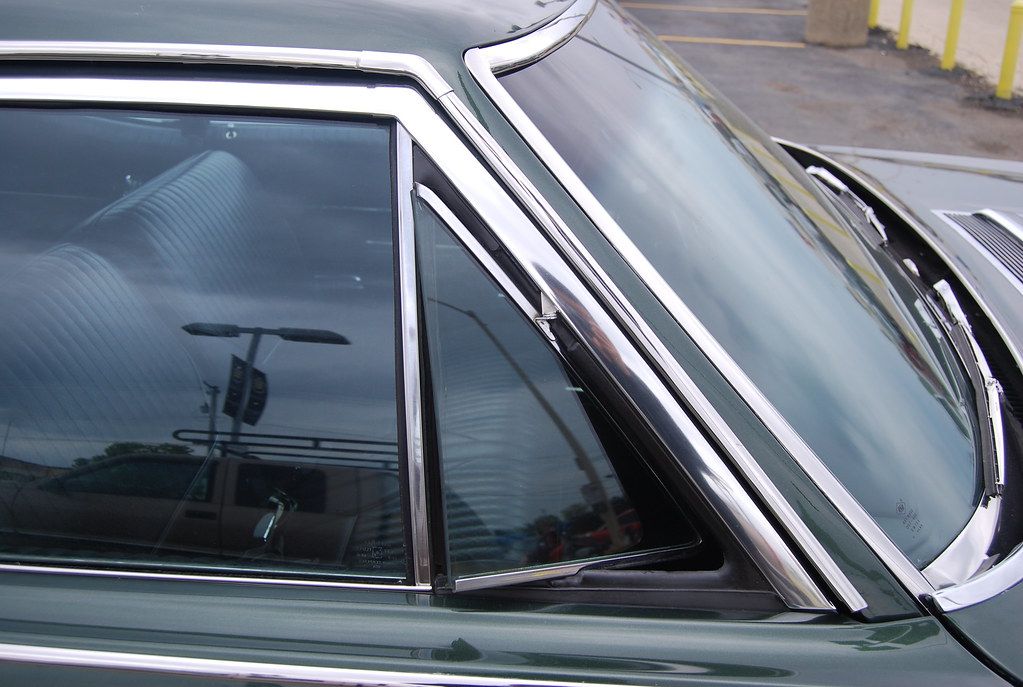
Alright, gearheads, buckle up and prepare for a serious dose of nostalgia because we’re about to take a deep dive into an era that truly defined automotive greatness: the 1990s. While Japanese car manufacturers like Honda, Toyota, and Nissan are practically household names in the US today, churning out models every day, there’s a special breed of car that holds a mythical status: the Japanese Domestic Market, or JDM, car. These aren’t just your everyday imports; these machines were built specifically for the Japanese market, and for a long time, they were the forbidden fruit for enthusiasts outside of Japan.
So, what exactly is it about these ’90s JDM models that still has collectors and discerning drivers absolutely buzzing? Why are they so iconic, and why do they continue to command such incredible demand even today? Well, the ’90s weren’t just a decade; they were a revolution in automotive engineering, a time when Japanese manufacturers pushed the boundaries of innovation and sophistication to be taken seriously on a global scale. What emerged from this era was a series of well-performing domestic models that captivated not only Japanese drivers but enthusiasts across the globe, especially in the West.
Beyond their undeniable cool factor, a huge part of the JDM appeal lies in the sheer ingenuity packed into these ’90s models. We’re talking about mechanical technologies so advanced that some hadn’t even been shared with the rest of the world yet! The results were fleets of powerful, economical rides that completely defied the notion of a standard commuter car. These were vehicles with engines as high-performance as you could get at the time, wrapped in sleek, yet simple, luxurious, and loud bodies. They were built for hard driving, for drifting, and above all, they were powerful vehicles each with their own distinct and individual personalities. Today, that unique blend of power, style, and a nostalgic flair of originality gives them an irresistible collectability factor.
It wasn’t just about raw power; ’90s JDM sports cars were also a product of a unique time and place. They were crafted during an era when today’s stringent environmental laws weren’t a concern, meaning true JDM cars built then can simply never be replicated today. That scarcity, combined with the cultural glorification of JDM and drifting in everything from video games to Hollywood blockbusters like The Fast and the Furious, has only amplified their legendary status. Owning a true imported JDM vehicle from Japan isn’t just car ownership; it’s a prestige, a one-of-a-kind opportunity, and for many, a sound investment. We’re about to explore the absolute kings of this golden era, so let’s get into it!
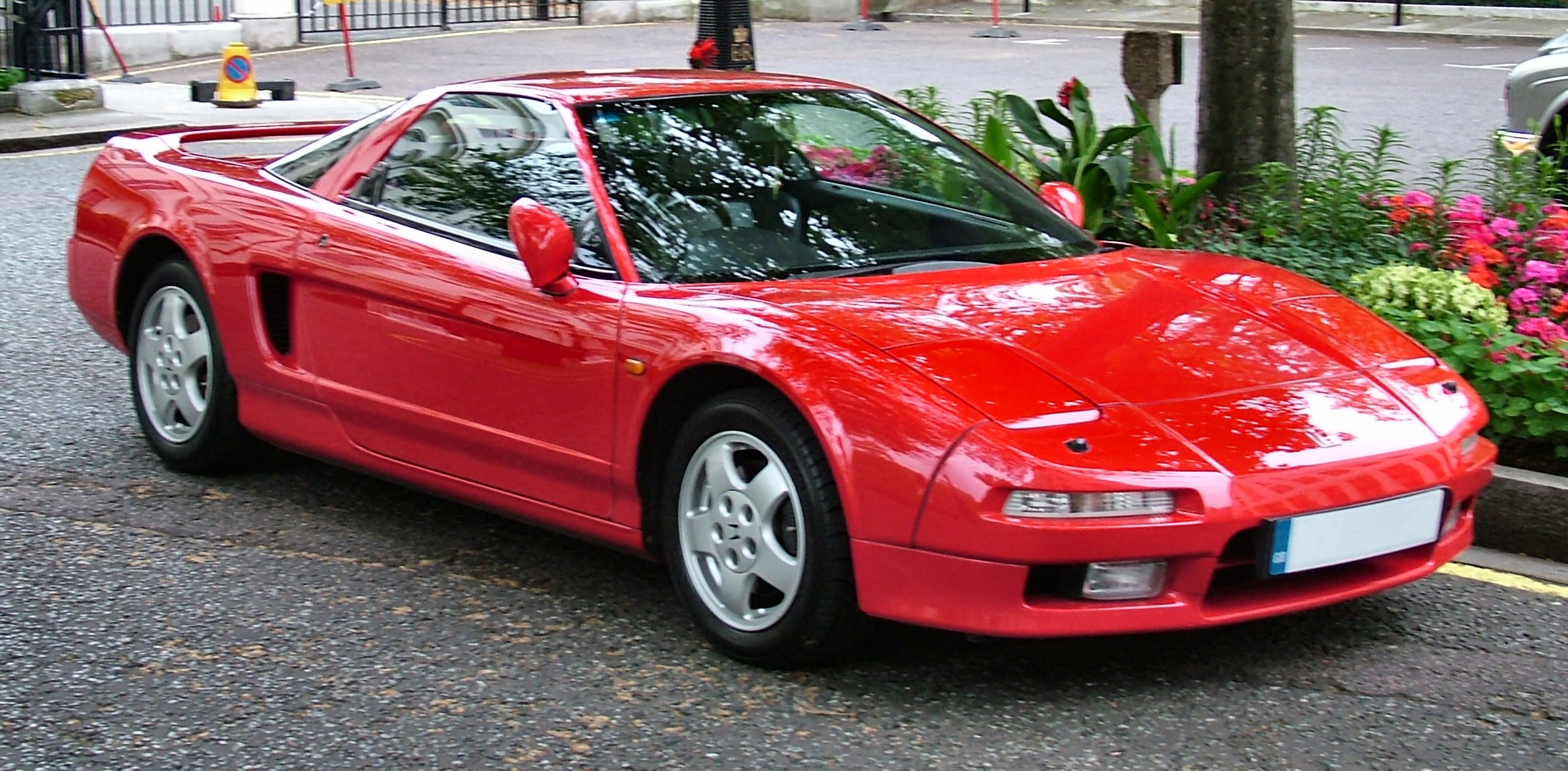
1. **Honda NSX**Let’s kick things off with arguably the best of the best: the Honda NSX. This car wasn’t just good; it was built with a singular, ambitious goal in mind – to go head-to-head with Ferrari’s high-speed models, and it absolutely succeeded! The NSX is the ultimate ’90s JDM car for so many reasons, but above all, it masterfully combined luxury with performance, creating a legend that still thrills today. It truly set a new benchmark for what a supercar could be.
The first-generation NSX, launched in 1990, was a showcase of Honda’s most advanced technologies, many of which trickled down directly from their formidable Formula One motorsports division. We’re talking about pioneering features like an all-aluminum unit body, an extruded aluminum alloy frame, and suspension – a monumental first for any production car! Add in titanium connecting rods and a sleek bodywork designed for 360-degree visibility and enhanced high-speed stability, and you have a machine engineered for excellence.
Under the hood, the NSX was equipped with a heavy-duty 3.0-litre VTEC V6 engine, a marvel of engineering that delivered incredible power and responsiveness. This powerhouse, combined with its groundbreaking lightweight construction and meticulous design, solidified the NSX’s reputation for unparalleled stability, mind-bending speed, and rock-solid reliability. It wasn’t just fast; it was predictably fast, a joy to drive.
Originally offered as a coupe, the NSX evolved to include a Targa roof option from 1995 onwards, giving drivers even more ways to enjoy its exhilarating performance. While another round of performance upgrades followed in 1997, the car largely stayed true to its original, brilliant design until the second generation arrived much later in 2016. The NSX isn’t just a car; it’s a statement, a testament to Honda’s engineering prowess, and a truly timeless ’90s icon.
Read more about: Remember the Glory Days? 14 German Sedans That Were the Absolute Icons of Status and Executive Commute in the 2000s and Early 2010s
2. **Honda Civic Type R EK9**When we talk about iconic ’90s JDM cars, the Honda Civic, in its various iterations, always comes up. But if we have to pick one that truly ticks all the boxes for raw performance, lightweight agility, and legendary reliability, it has to be the EK9 Type R Civic. What makes this car even more special for enthusiasts is the fact that, throughout the late ’90s, it was completely unavailable outside of Japan – a true domestic market hero!
First introduced in 1997, the EK9 was a three-door hatchback that shared a lot of its high-performance DNA with the famed Integra Type R. We’re talking about a similar meticulous approach to weight management and sound-cancelling measures, all designed to maximize its track potential. However, the EK9 carved out its own unique identity with a few standout features that made it instantly recognizable and revered.
At its heart was the powerful B16B engine, a high-revving marvel that delivered an intoxicating driving experience. Inside, the EK9 was pure performance, boasting aggressive bucket seats that hugged you through every corner and distinctive red interior detailing that screamed speed. In fact, a red badge was specifically used to differentiate it from other Hondas, perfectly encapsulating the brand’s dream of producing a high-powered car capable of dominating the racetracks.
The EK9 Type R wasn’t just a car; it was a pure, unadulterated driving machine. Its incredible performance, coupled with its lightweight body and Honda’s renowned reliability, cemented its place in JDM folklore. For many, it represents the pinnacle of ’90s hot hatch engineering, a testament to Honda’s commitment to creating driver-focused vehicles that were as thrilling on the road as they were reliable for everyday use.
Car Model Information: 2016 Honda Civic EX-L
Caption: 2024 Honda Civic liftback
Manufacturer: Honda
Aka: ubl
Production: 1972–present
Class: Subcompact car
BodyStyle: fastback,Sedan (automobile)
Layout: Front-engine, front-wheel-drive layout,Front-engine, four-wheel-drive layout
Predecessor: Honda N600,Honda Z600
Categories: 1980s cars, 1990s cars, 2000s cars, 2010s cars, 2020s cars
Summary: The Honda Civic (Japanese: ホンダ・シビック, Hepburn: Honda Shibikku) is a series of automobiles manufactured by Honda since 1972. As of 2023, the Civic is positioned between the Honda Fit/City and Honda Accord in Honda’s global passenger car line-up. It is one of the best-selling automobiles in history, with over 27 million units sold through 2021.
The first-generation Civic was introduced in July 1972 as a two-door fastback sedan, followed by a three-door hatchback that September. With a 1,169 cc transverse engine and front-wheel drive, the car provided good interior space despite its small overall dimensions. Initially gaining a reputation for being fuel-efficient, reliable and environmentally friendly, later iterations have become known for performance and sportiness, especially the Civic Si, SiR, and Type R versions. It is currently in its eleventh generation, which has been produced since 2021.
The Civic has often been rebadged for international markets, and it served as the basis for the Honda CR-X, the Honda CR-X del Sol, the Concerto, the first generation Prelude, the Civic Shuttle (which later became the Orthia) and the CR-V (which in turn was used as the basis for the Honda FR-V).
Get more information about: Honda Civic
Buying a high-performing used car >>>
Brand: Honda Model: Civic
Price: $14,685 Mileage: 148,116 mi.
Read more about: Classic Car Showdown: 7 Icons That Soar in Value & 7 That Struggle to Hold Their Own
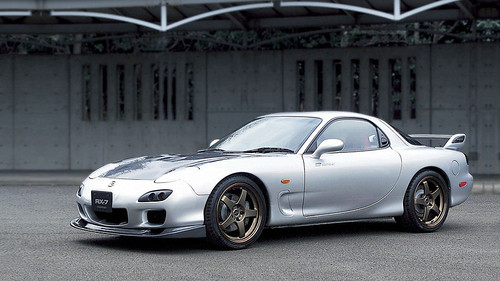
3. **Mazda RX-7 FD**Oh, the Mazda RX-7 FD – a name that sends shivers of excitement down the spine of any true JDM enthusiast! This third-generation model is one of the greatest and most popular JDM cars of the ’90s, instantly recognizable for its breathtakingly rounded curves and an overall sleeker design that significantly evolved from its predecessors. It was a standout in both motorsport and everyday commuting circles, proving that you could have stunning looks and blistering performance.
What truly set the FD apart was its incredibly lightweight construction, a core tenet of its design philosophy. This, combined with its powerful sequential twin-turbochargers, made for an intoxicating package. The rotary engine, a Mazda hallmark, was ingeniously placed behind the front axle, creating an almost perfect 50/50 front and rear weight balance. This engineering masterpiece allowed the FD to achieve incredible speeds in virtual seconds while maintaining exceptional handling that made it an absolute must-have for serious drivers.
Mazda, ever the innovator, also recognized the importance of creating a car that appealed to both enthusiasts and their wallets. By utilizing an engine below the standard 1.5-litre capacity for annual road taxes, the RX-7 became significantly more affordable for Japanese consumers, without ever compromising on its heft and performance. This smart financial engineering helped democratize performance, creating a new JDM favorite that was both aspirational and accessible.
The FD dropped jaws with its looks and melted minds with its performance. Its exceptional handling, thanks to that perfect weight balance, made it a dream for canyon carving, track days, and spirited street driving. It remains a beloved icon, not just for its unique rotary engine and stunning design, but for its perfect fusion of affordability, power, and agility that defined a generation of JDM sports cars.
Car Model Information: 2025 Hyundai PALISADE Calligraphy Night Edition
Name: Mazda RX-7
Caption: 1994 Mazda RX-7 R2 (FD3S)
Manufacturer: Mazda
Aka: Mazda Savanna RX-7 (Japan, 1978–1991),Mazda ɛ̃fini RX-7 (Japan, 1991–1997)
Class: Sports car
Production: 1978–2002,811,634 produced
Assembly: Hiroshima
Platform: Mazda F platform
Layout: Front-engine, rear-wheel-drive layout#Front mid-engine, rear-wheel-drive layout
Predecessor: Mazda RX-3
Successor: Mazda RX-8
Categories: 1980s cars, 1990s cars, 2000s cars, 24 Hours of Le Mans race cars, All Wikipedia articles written in British English
Summary: The Mazda RX-7 is a sports car which was manufactured and marketed by Mazda from 1978 to 2002 across three generations. It has a front mid engine, rear-wheel-drive layout and uses a compact and lightweight Wankel rotary engine.
The first-generation RX-7, codenamed SA (early) and FB (late), is a two-seater coupé with a rear hatchback. It featured a 12A carbureted rotary engine as well as the option for a 13B rotary engine with electronic fuel injection in later years. The second-generation RX-7, carrying the internal model code FC, was offered as a two-seater coupé with a 2+2 option available in some markets, as well as in a convertible body style. This was powered by the 13B rotary engine, offered in naturally aspirated or turbocharged forms. The third-generation RX-7, model code FD, was offered as a two-seater coupé with a 2+2 version offered as an option for the Japanese market. It featured a sequentially turbocharged 13B REW engine.
More than 800,000 RX-7s were manufactured over its lifetime.
Get more information about: Mazda RX-7
Buying a high-performing used car >>>
Brand: Mazda Model: RX-7 FD
Price: $48,755 Mileage: 4,184 mi.
Read more about: Undervalued ’80s Imports: 9 Easy-to-Maintain Restoration Gems You Need to Know About
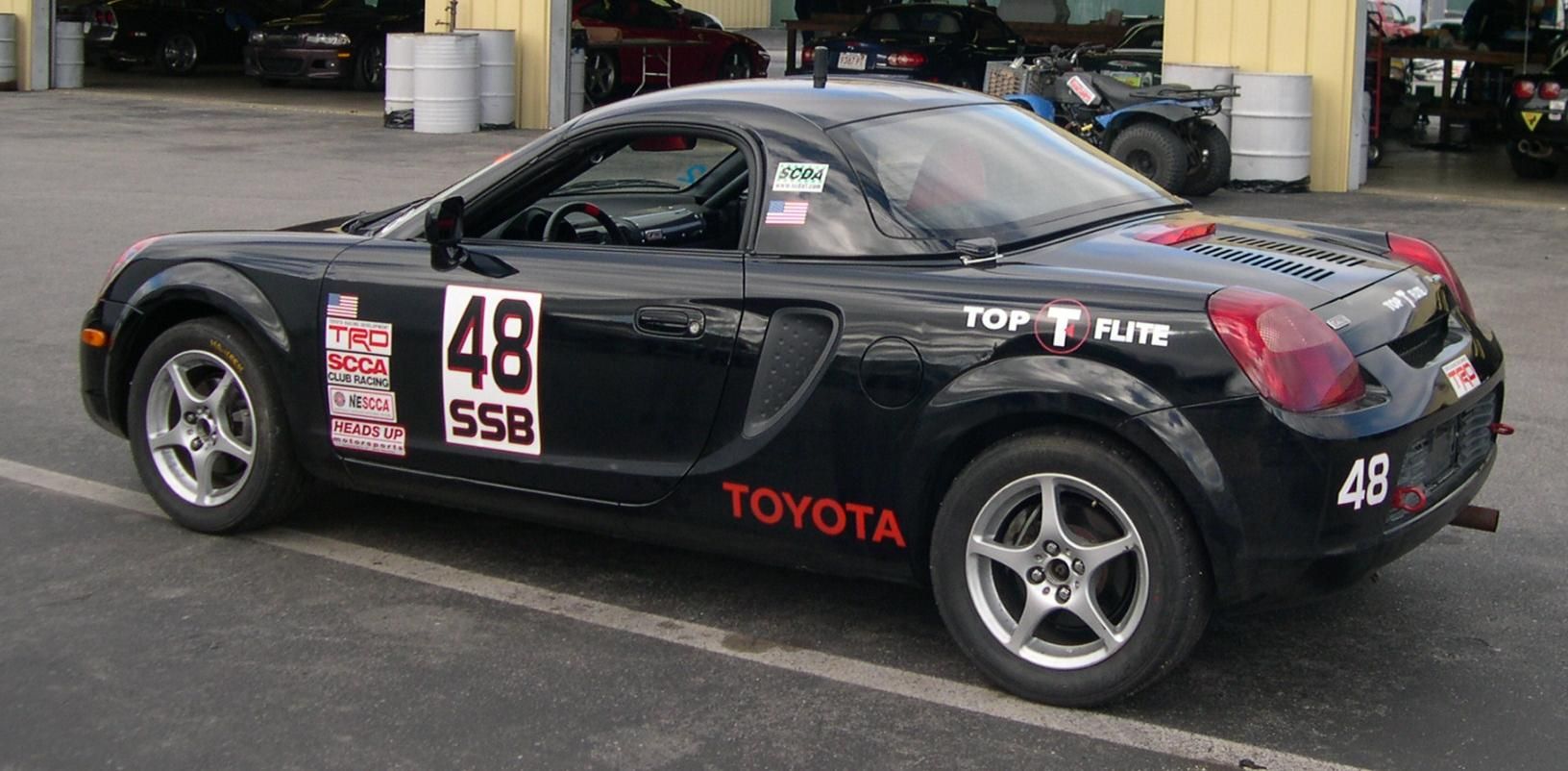
4. **Toyota MR2**The Toyota MR2, particularly its second-generation W20 models that hit the Japanese market in 1989, carved out a unique niche in the ’90s JDM scene. The first-generation MR2 had already set standards in motocross, but the W20 ushered in a new era of appreciation for the brand, largely due to its commitment to performance without unnecessary frills, combined with an irresistible affordability. It’s truly a smart, sophisticated classic.
Fitted with elegantly simplistic outer features, the MR2 was a testament to the idea that less is often more. It boasted practical yet effective components like four-wheel disc brakes and competent front and rear suspension, making it a capable and confidence-inspiring drive. Its surge in popularity was undeniable, fueled by its attractive price tag and a surprisingly luxurious and larger interior for a car of its class, proving you didn’t need to break the bank for a great driving experience.
For a standard ride that didn’t come loaded with a ton of bells and whistles, the MR2 did the job – and then some! Toyota continued to refine the model, eventually adding advanced power steering and wider tires to further enhance its already legendary handling characteristics. These upgrades helped maintain the myth and spirit of its original W10 predecessor, ensuring the MR2 remained a driver’s car at heart.
The second-generation MR2 also received a more rounded and streamlined styling, a look that playfully earned it the dubious nickname “the poor man’s Ferrari.” But fans didn’t care one bit! Its smart, sophisticated edge, combined with its mid-engine layout and fantastic handling, cemented its status as a true ’90s JDM classic. It was a car that offered exotic looks and performance thrills at a fraction of the cost, making it accessible to a broader range of enthusiasts.
Car Model Information: 1993 Toyota MR2 Turbo
Name: Toyota MR2
Caption: Second generation MR2
Manufacturer: Central Motors
Aka: Toyota MR (France and Belgium)
Production: 1984–2007
Assembly: Sagamihara, Kanagawa
Class: Sports car
Layout: Rear mid-engine, rear-wheel-drive layout
ModelYears: 1985–2007
Categories: 1990s cars, 2000s cars, All Wikipedia articles written in American English, All articles containing potentially dated statements, All articles needing additional references
Summary: The Toyota MR2 is a two-seater sports car which was manufactured and marketed by Toyota from 1984 until 2007 over three generations. It was the first Japanese rear-mid-engine, rear-wheel-drive production car and was sold around the world. The first generation (W10) was produced from 1984 to 1989, the second generation (W20) from 1989 to 1999, and the third generation (W30) from 1999 to 2007.
Conceived as a small, economical and sporty car, the MR2 features a straight-four engine, transversely mounted in front of the rear axle, four-wheel disc brakes, and fully independent coilover suspension with MacPherson struts on each wheel.
The name MR2 stands for either “mid-ship run-about 2-seater” or “mid-engine, rear-wheel-drive, 2-seater”. In French-speaking markets, the vehicle was renamed Toyota MR because the abbreviation “MR2” sounds like the profanity “merdeux” when spoken in French.
Get more information about: Toyota MR2
Buying a high-performing used car >>>
Brand: Toyota Model: MR2
Price: $21,499 Mileage: 145,631 mi.
Read more about: Old But Gold: 14 Classic Cars That Are Practically Unbreakable – True Legends of Durability
5. **Nissan Silvia S14 (tie)**A bona fide original in the world of ’90s JDM cars, the Nissan Silvia S14 is an absolute must-have on any best-of list for the era. When it debuted in 1993, it quickly became renowned for its impressive power range and earned a reputation as one of the best ’90s Japanese drift cars around. It took everything great about its predecessor, the S13, and refined it, creating a truly iconic machine.
The S14 featured several enhancements and upgrades over the S13 model, notably adopting a more rounded styling and a lower, wider stance, which gave it a more aggressive and modern look for the mid-’90s. But beyond aesthetics, it was this iconic 2-door sports coupe’s legendary handling capabilities – underpinned by a continually refined but never replicated chassis – that made it a consistent favorite for racers and everyday commuters alike.
Whether you were tearing up the track, mastering the art of drifting, or simply enjoying a spirited drive, the Silvia S14 delivered. Its responsive engine, combined with its perfectly balanced chassis, provided an intuitive and engaging driving experience that few cars of its time could match. It was a car that felt connected to the driver, inspiring confidence and pushing limits.
Finding an S14 nowadays can be a bit of a treasure hunt, as production ceased in 1999 to make way for its successor, the S15. And even when you do find one, prepare to shell out a boatload of cash, as their collectability factor and pedigree make them well worth the investment for enthusiasts willing to import them from Japan. The S14 isn’t just a car; it’s a piece of drifting history, a true JDM legend.
Car Model Information: 2025 Hyundai PALISADE Calligraphy Night Edition
Name: Nissan Silvia
Caption: Nissan Silvia Autech Version (S15, Japan)
Manufacturer: Nissan
Production: unbulleted list
Class: Sports car
Layout: Front-engine, rear-wheel-drive
Categories: 1970s cars, 1980s cars, 1990s cars, 2000s cars, All articles needing additional references
Summary: The Nissan Silvia (Japanese: 日産・シルビア, Hepburn: Nissan Shirubia) is the series of small sports cars produced by Nissan. Versions of the Silvia have been marketed as the 200SX or 240SX for export, with some export versions being sold under the Datsun brand.
The Gazelle was the twin-model of Silvia sold in Japan at different dealerships for the S110 and S12 generations; the Gazelle name was also used in Australia for the S12 generation. For the S13 generation in Japan, the Gazelle was replaced with the 180SX, which was a hatchback model of the Silvia with pop-up headlights that was also sold as the 200SX and 240SX for export purposes.
Get more information about: Nissan Silvia
Buying a high-performing used car >>>
Brand: Nissan Model: Silvia S14
Price: $48,755 Mileage: 4,184 mi.
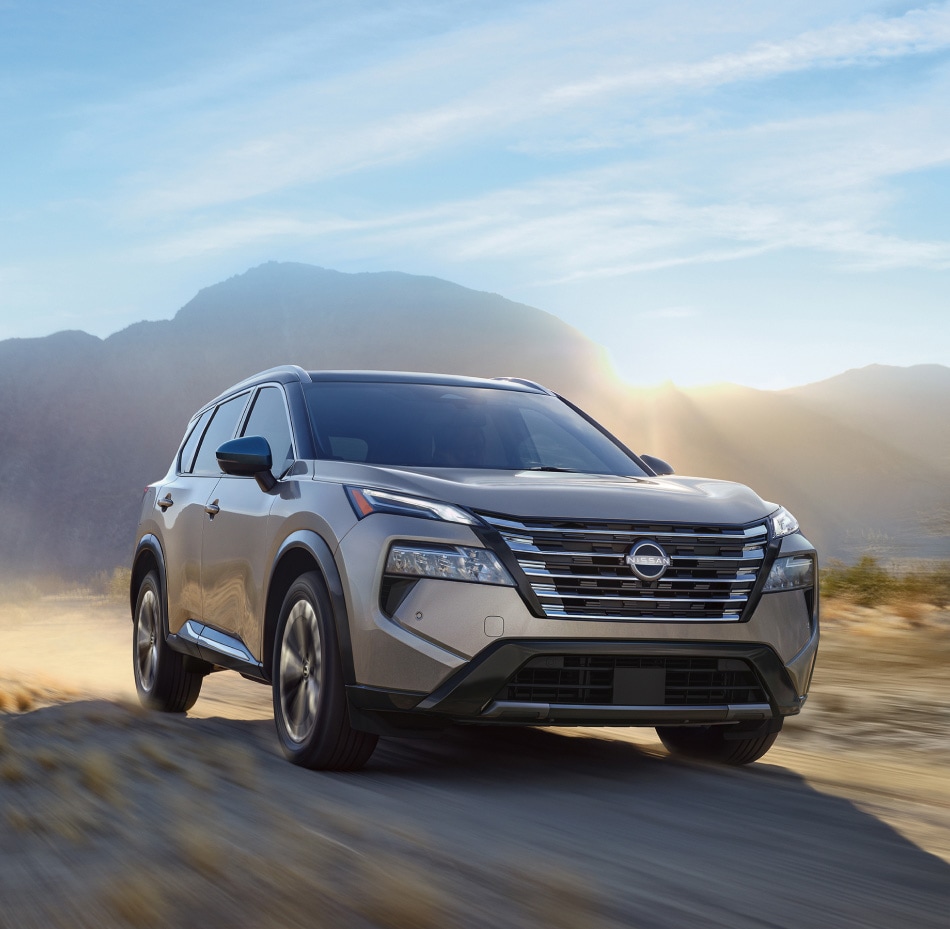
6. **Nissan Silvia S15 (tie)**Speaking of the Silvia, we absolutely couldn’t NOT include the S15 on our list of iconic JDM cars, even if it barely made the ’90s cut, kicking off its production run in 1999. It represents the culmination of the Silvia lineage in the decade, showcasing a forward-thinking design and performance enhancements that hinted at the new millennium while staying true to its drifting roots.
Unlike its previous version, the S15 roared to life with an impressive 250 PS at 6400 rpm, largely thanks to a significant ball-bearing turbocharger upgrade and a vastly improved engine management system. This meant more power, more responsiveness, and an even more exhilarating driving experience straight out of the factory. It was a true powerhouse in a compact package.
The S15 also brought a fresh wave of modern styling touches and interior flourishes, a clear nod to the upcoming new century. The model lineup even included an “Aero” variant, complete with a distinctive rear wing and side skirts, further emphasizing its sporty credentials. These design cues helped it stand out, combining aggressive performance with a sleek, updated aesthetic.
While its framing and body dimensions were tweaked from the previous S14 standards in accordance with new regulations from the Japanese Government, these changes didn’t deter its appeal. Despite the size adjustments, the increased output and cool, updated look helped it absolutely dominate in drifting circles. Today, the S15 remains a popular, if not increasingly rare to find, late-’90s JDM ride, a testament to its enduring legacy and phenomenal capabilities.
Alright, JDM fanatics, if you thought the first six legends were awesome, hold onto your seats because we’re just getting warmed up! The ’90s gifted us with so many incredible machines that picking just a few feels like choosing your favorite child. But fear not, we’ve got six more absolute powerhouses ready to make your heart race and your nostalgia meter explode. These next cars aren’t just vehicles; they’re cultural touchstones, racing champions, and collector’s dreams, proving that the ’90s truly were the golden age of Japanese automotive brilliance. Let’s keep this turbocharged trip rolling!
Car Model Information: 2025 Hyundai PALISADE Calligraphy Night Edition
Name: Nissan Silvia
Caption: Nissan Silvia Autech Version (S15, Japan)
Manufacturer: Nissan
Production: unbulleted list
Class: Sports car
Layout: Front-engine, rear-wheel-drive
Categories: 1970s cars, 1980s cars, 1990s cars, 2000s cars, All articles needing additional references
Summary: The Nissan Silvia (Japanese: 日産・シルビア, Hepburn: Nissan Shirubia) is the series of small sports cars produced by Nissan. Versions of the Silvia have been marketed as the 200SX or 240SX for export, with some export versions being sold under the Datsun brand.
The Gazelle was the twin-model of Silvia sold in Japan at different dealerships for the S110 and S12 generations; the Gazelle name was also used in Australia for the S12 generation. For the S13 generation in Japan, the Gazelle was replaced with the 180SX, which was a hatchback model of the Silvia with pop-up headlights that was also sold as the 200SX and 240SX for export purposes.
Get more information about: Nissan Silvia
Buying a high-performing used car >>>
Brand: Nissan Model: Silvia S15
Price: $48,755 Mileage: 4,184 mi.
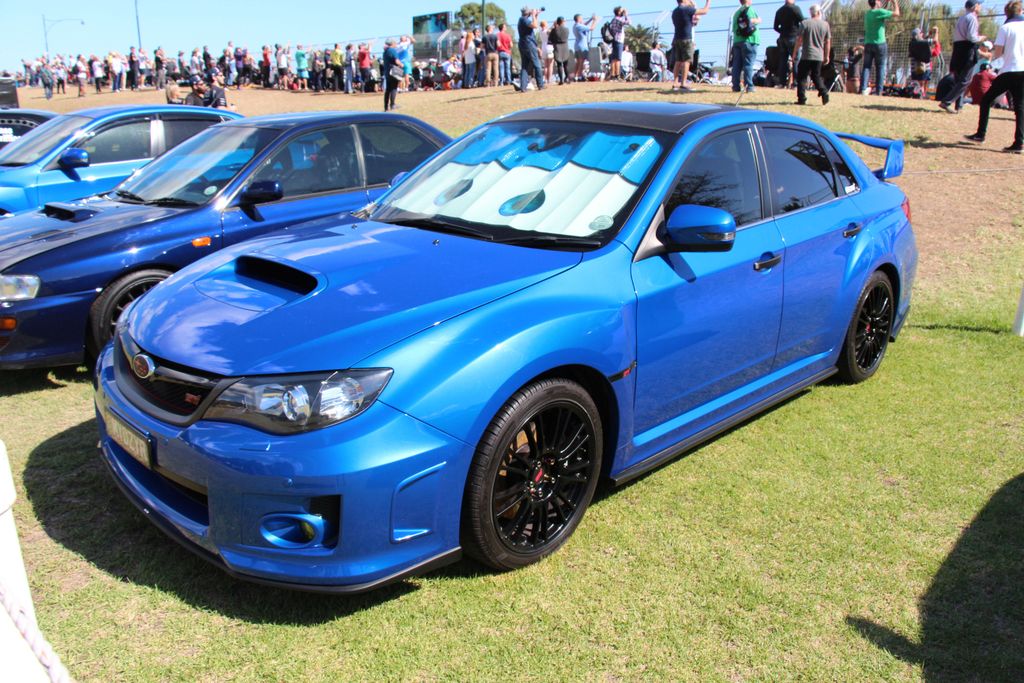
7. **Subaru Impreza WRX STI**If you were anywhere near a rally stage or a video game console in the ’90s, the Subaru Impreza WRX was probably a household name, or at least a dream car! Built with the express purpose of dominating the 1992 World Rally Championship, this car wasn’t messing around. It came with a super lightweight frame designed to deliver the ultimate in high-performance, packed with then-advanced technologies like all-wheel drive and turbocharged four-cylinder engines that truly set it apart from the competition.
But then, in 1994, things got even wilder! Subaru Tecnica International, the company’s legendary motorsports division, unleashed the STi-badged versions. These weren’t just everyday cars; they quickly became the gold standard for street racers and rally enthusiasts alike. We’re talking about advanced performance engines, plus enhanced transmissions and suspension that turned an already capable car into an absolute beast.
True to the JDM spirit, these STi models remained the ultimate forbidden fruit, completely unavailable outside of Japan until the early 2000s. That exclusivity only amplified their mystique, making them even more desirable. Today, the STi models continue to be the biggest draw from Subaru’s prestige line, heavily sought after by collectors and performance junkies who know a true icon when they see one.
Car Model Information: 2025 Hyundai PALISADE Calligraphy Night Edition
Name: Subaru Impreza WRX STI
Caption: 2011 Subaru Impreza WRX STI Sedan (3rd generation)
Manufacturer: Subaru
Production: 1994–2014
Assembly: Ōta, Gunma
Predecessor: Subaru Legacy (first generation)
Successor: Subaru WRX STI
Class: Sport compact,World Rally Car
BodyStyle: Compact Sedan, Coupe, Wagon, Hatchback
Layout: Front-engine design
Engine: Subaru EJ engine
Categories: All-wheel-drive vehicles, All articles needing additional references, All articles with unsourced statements, Articles needing additional references from July 2025, Articles with short description
Summary: The Subaru Impreza WRX STI is a high performance model of the Subaru Impreza compact car line, manufactured by Japanese automaker Fuji Heavy Industries Subaru.
In 1988, FHI created Subaru Tecnica International (STi) as its motorsport division to develop and compete in the FIA World Rally Championship and other motorsports activities. Following the introduction of the first generation Impreza in November 1992 and the following year’s debut of the Group A rally car into the WRC, an ‘STi version’ was made commercially available in January 1994 as a homologation model under FIA regulations. Thereafter, subsequent evolutions dubbed STi Version or simply STI were manufactured and sold alongside the Impreza model lineup initially in Japan only and later in selected world markets. As the STi or STI model was typically the highest spec of the Impreza, it has become popular with performance enthusiasts, tuners and amateur racers in many motorsports disciplines especially rallying and circuit driving.
FHI has released many different models and versions including special limited editions of the WRX STI. However many of these versions were and are only available in the Japanese Domestic Market. Although the concept behind the STI model is taking a base model such as the Impreza or Legacy and further developing it for high performance, STI models fall mainly into 2 categories. The first is a fully developed and tested model with the purpose of homologating it for motorsports which is sold as a street legal road car. The second is a complete car pre-fitted from the factory with parts that are available from the STI catalogue and marketed as a ‘Tuned by STI’ model. Spin-off models with mainly cosmetic additions or alterations are also marketed usually in limited quantities.
Get more information about: Subaru Impreza WRX STI
Buying a high-performing used car >>>
Brand: Subaru Model: Impreza WRX STI
Price: $48,755 Mileage: 4,184 mi.
Read more about: Drove it Regretted it: 12 Compact Models That Made Owners Question Their Judgment on the First Commute.
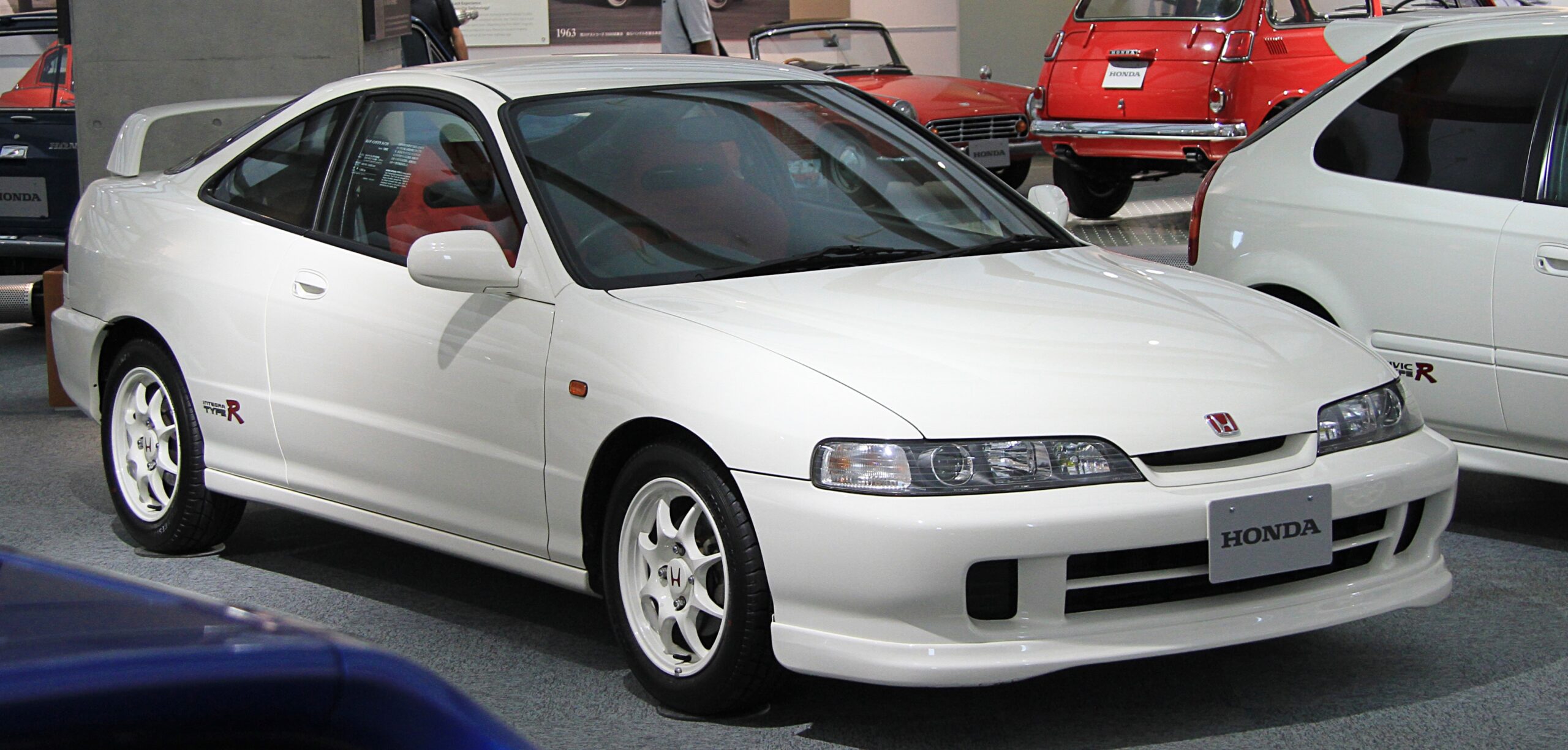
8. **Honda Integra Type R**Prepare yourselves, because we’re talking about a car that’s been famously dubbed “the greatest front-wheel-drive performance car ever made.” And honestly? We’re not about to disagree! Honda’s Type R Integra isn’t just one of the greatest ’90s JDM cars because of hype; it’s because it absolutely delivers on every promise of power and handling.
After a series of incredible upgrades in 1995, the Type R was a lean, mean, racing machine. It featured lighter wheels, a thinner windshield, and even less sound insulation – all meticulously engineered to boost its overall performance. And get this: it packed a hand-built engine and revised intake and exhaust systems, which meant even *more* power, even if it also meant way more manufacturing costs. But Honda, knowing what legends are made of, understood that these advancements were worth every penny.
Built exclusively for the Japanese domestic market, the Integra continued its evolution with further upgrades in 1998 and 2000, which included higher gear ratios and larger ’90s JDM wheels. Its unwavering focus on being a pure driver’s car solidified its status. This isn’t just a car; it remains a revered performance machine, one of the most acclaimed rides around the world, still captivating enthusiasts with its unparalleled driving experience.
Car Model Information: 2023 Audi Q5 45 S line Premium Plus
Name: Honda Integra
Caption: 2002 Honda Integra Special Edition (DC5) in Australia.
Aka: Honda Civic (eleventh generation)
Manufacturer: Honda
Production: proper name
ModelYears: 1986–2006,2023–present
Assembly: Suzuka, Mie
Class: Compact car
BodyStyle: liftback,coupé
Layout: Front-engine, front-wheel-drive layout,Front-engine, four-wheel-drive layout
Predecessor: Honda Quint
Successor: ubl
Categories: 1990s cars, 2000s cars, 2020s cars, All articles with unsourced statements, All articles with vague or ambiguous time
Summary: The Honda Integra (Japanese: ホンダ インテグラ, Hepburn: Honda Integura), sold in North America as the Acura Integra and later the Acura RSX, is an automobile produced by the Japanese company Honda from 1985 until 2006, and then since 2021. It succeeded the Quint as a more luxurious and sport-oriented derivative of the Civic. The Integra was one of the launch models for Acura in the US in 1986 alongside the Acura Legend. Throughout its production run, the Integra was highly regarded for its handling and performance. The 1995–2001 Integra Type R is widely regarded as one of the best front-wheel-drive cars of all time.
The Integra nameplate was revived in 2021 after a 16-year hiatus. The Honda Integra nameplate is used for a restyled Honda Civic sedan for the Chinese market, while the Acura Integra nameplate is used for a Civic-based liftback for North America, replacing the Acura ILX.
Get more information about: Honda Integra
Buying a high-performing used car >>>
Brand: Honda Model: Integra Type R
Price: $24,705 Mileage: 43,133 mi.
Read more about: Drove it Regretted it: 12 Compact Models That Made Owners Question Their Judgment on the First Commute.
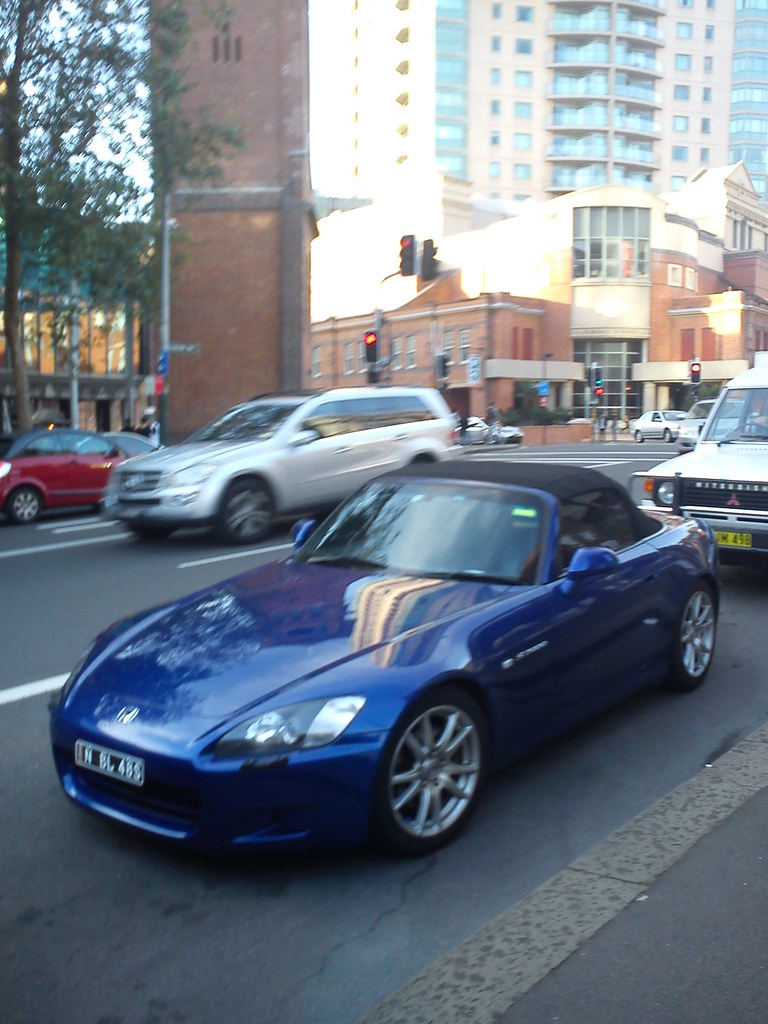
9. **Honda S2000**Alright, this one practically squeezed onto our ’90s list by the skin of its tires, kicking off its incredible journey in 1999. But seriously, the Honda S2000 was such a groundbreaking model upon its release, there was no way we could possibly leave it out! This roadster was a total game-changer, featuring an F-1-inspired F20C engine that proudly held the title of the highest-powered naturally aspirated production engine built at the time. Basically, it was pure, unadulterated speed in a sleek package, earning it the apt description: “a Mazda Miata with power.”
Those early AP1 versions of the S2000 were nothing short of spectacular, boasting a solid 239 horsepower, a slick six-speed manual transmission, and a four-cylinder, 2.2-litre engine that could scream all the way up to 9,000 RPM. Talk about an intoxicating soundtrack! This raw power was seamlessly combined with a sleek, fun, and lightweight chassis that seemed to simply glide through traffic, cementing its legendary reputation for incredible handling.
Even today, the Honda S2000 is a beloved classic of late ’90s JDM, a testament to Honda’s engineering brilliance and its commitment to pure driving pleasure. If you’re looking to get your hands on one of these beauties, be prepared: these models can still fetch a moderate to high price tag, a clear indication of their enduring appeal and collectability in the enthusiast world.
Car Model Information: 2004 Honda S2000 Base
Name: Honda S2000
Manufacturer: Honda
Production: 1999–2009 (110,673 produced)
Class: Sports car
Layout: Front-engine, rear-wheel-drive layout#Front mid-engine, rear-wheel-drive layout
BodyStyle: Roadster (automobile)
Designer: Shigeru Uehara
Caption: 2005 Honda S2000 (AP2)
Predecessor: Honda S800
Categories: 2000s cars, All articles containing circular references, All articles lacking reliable references, Articles lacking reliable references from May 2024, Articles with short description
Summary: The Honda S2000 is a front-mid engine open top sports car that was manufactured by Japanese automobile manufacturer Honda, from 1999 until 2009. First shown as a concept car called the SSM at the Tokyo Motor Show in 1995, the production version was launched on April 15, 1999, to celebrate the company’s 50th anniversary. The S2000 is named for its engine displacement of two liters, while “S” stood for “sports” carrying on in the tradition of the S500, S600, and S800 roadsters of the 1960s.
Several revisions were made throughout the car’s production life, including changes to the engine, gearbox, suspension, interior and exterior. Officially two variants exist: the initial launch model was given the chassis code AP1; though cosmetically similar, the facelifted version, known as the AP2 in North America and Japan, incorporated significant changes to the drivetrain and suspension. Production of the S2000 ceased on August 19, 2009.
The Honda S2000 was notable for its exceptional specific power output of about 92 kW (124 hp) per liter, or about two horsepower per cubic inch, the highest of any mass production, naturally aspirated car, until 2010.
Get more information about: Honda S2000
Buying a high-performing used car >>>
Brand: Honda Model: S2000
Price: $28,995 Mileage: 72,541 mi.
Read more about: Track Day Champions on a Budget: 11 Bargain Sports Cars That Redefine Affordable Performance

10. **Toyota Supra A80**By the time the already iconic Supra received its fourth major upgrade in 1993, Toyota wasn’t just building cars; they were forecasting the future! They unleashed a torrent of technological changes that would absolutely revolutionize the peak era of JDM cars. Say goodbye to the boxy lines and standard handling that had defined the Supra line since its 1978 debut; the fourth-generation A80 model burst onto the scene with a stunningly new rounded and curvaceous body, putting a greater emphasis on high performance than ever before.
Underneath that gorgeous new skin, the A80 was a marvel of engineering. It boasted two new engines, including a formidable twin-turbocharged variant that churned out an impressive 206kW. But Toyota didn’t stop there; they meticulously shaved off weight by using aluminum in the framework, incorporated a gas-injected rear spoiler for aerodynamics, and even designed a single pipe exhaust. Each of these features, many of which were total game-changers at the time, contributed to a driving experience that was truly unforgettable.
The result of this influx of innovation? The Toyota Supra remains one of the most popular and highly sought-after ’90s JDM cars available on the international market today. Its status isn’t just confined to car shows and garages; it’s become so iconic that it routinely makes appearances in video games and major Hollywood blockbusters, most notably becoming a star in ‘The Fast and the Furious’ series. It’s not just a car; it’s a legend.
Car Model Information: 2024 Toyota Supra 3.0 Premium
Name: Toyota Supra
Caption: Toyota GR Supra (J29/DB)
Manufacturer: Toyota
Aka: unbulleted list
Production: unbulleted list
Class: Sports car
BodyStyle: fastback,coupé
Layout: Front-engine, rear-wheel-drive layout
Predecessor: Toyota Celica (A20)
Categories: 1980s cars, 1990s cars, 2000s cars, 2010s cars, 2020s cars
Summary: The Toyota Supra (Japanese: トヨタ・スープラ, Hepburn: Toyota Sūpura) is a sports car and grand tourer manufactured and developed by the Toyota Motor Corporation beginning in 1978. The name “supra” is a definition from the Latin prefix, meaning “above”, “to surpass” or “go beyond”.
The initial four generations of the Supra were produced from 1978 to 2002. The fifth generation has been produced since March 2019 and later went on sale in May 2019. The styling of the original Supra was derived from the Toyota Celica, but it was longer. Starting in mid-1986, the A70 Supra became a separate model from the Celica. In turn, Toyota also stopped using the prefix Celica and named the car Supra. Owing to the similarity and past of the Celica’s name, it is frequently mistaken for the Supra, and vice versa. The first, second and third generations of the Supra were assembled at the Tahara plant in Tahara, Aichi, while the fourth generation was assembled at the Motomachi plant in Toyota City. The 5th generation of the Supra is assembled alongside the G29 BMW Z4 in Graz, Austria by Magna Steyr.
The Supra traces much of its roots back to the 2000GT owing to an inline-6 layout. The first three generations were offered with a direct descendant to the Crown’s and 2000GT’s M engine. Interior aspects were also similar, as was the chassis code “A”. Along with this name, Toyota also included its own logo for the Supra. It was derived from the original Celica logo, being blue instead of orange. This logo was used until January 1986, when the A70 Supra was introduced. The new logo was similar in size, with orange writing on a red background, but without the dragon design. That logo, in turn, was on Supras until 1991 when Toyota switched to its current oval company logo. The dragon logo was a Celica logo regardless of what colour it was. It appeared on the first two generations of the Supra because they were officially Toyota Celicas. The dragon logo was used for the Celica line until it was also discontinued.
In 1998, Toyota ceased sales of the fourth-generation Supra in the United States. Production of the fourth-generation Supra for worldwide markets ended in 2002. In January 2019, the fifth-generation Supra, which was co-developed with the G29 BMW Z4, was introduced.
Get more information about: Toyota Supra
Buying a high-performing used car >>>
Brand: Toyota Model: Supra
Price: $62,799 Mileage: 2,993 mi.
Read more about: Beyond the Commute: 14 Cars That Redefine Driving Fun and Handling Perfection for Enthusiasts
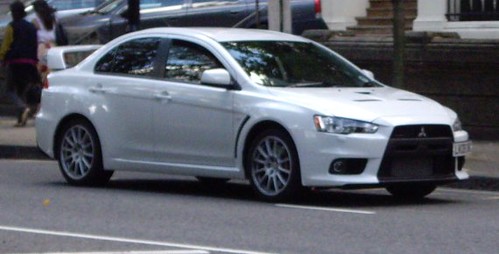
11. **Mitsubishi Lancer Evolution**Ah, the EVOs! The Mitsubishi Lancer Evolution model kicked off its legendary production run in 1992, initially conceived as a formidable sports sedan and rally car. And boy, did it deliver! Since its inception, the EVO has absolutely soared, becoming one of the most iconic JDM cars of the ’90s, instantly recognizable and universally adored by enthusiasts around the globe.
What made each generation of the EVO (designated by a Roman numeral all the way up to the tenth, the Evolution X, before its discontinuation in 2016) so special? Every single one was outfitted with powerful turbocharged inline four-cylinder engines and advanced all-wheel-drive systems. But beyond the incredible handling and ultimate speed, what truly cemented the Lancer’s enduring appeal was its consistently boxy chassis – a design that remains one of the most recognizable bodies in all of Japanese automaking.
For a long time, the sheer popularity of these Lancer models in Japan imbued them with a mythical appeal overseas, mainly due to their extremely limited import accessibility. But guess what? Times have changed! Today, EVOs are not only readily available for export but have also rightfully earned their permanent place in the ’90s JDM canon. Owning an EVO isn’t just having a car; it’s owning a piece of rally and tuner history.
Car Model Information: 2025 Hyundai PALISADE Calligraphy Night Edition
Name: Mitsubishi Lancer Evolution
Caption: Mitsubishi Lancer Evolution X
Manufacturer: Mitsubishi Motors
Production: 1992–2016
BodyStyle: sedan (car),station wagon
Assembly: Japan:,{{blist,Okazaki, Aichi,Kurashiki, Okayama
Class: Sport compact car
Layout: Front-engine, four-wheel-drive
Engine: Straight-four engine,Mitsubishi Sirius engine#4G63,Mitsubishi 4B1 engine#4B11T
Transmission: Twin Clutch SST,5-speed automatic (2002, 2006–2007),manual transmission,6-speed manual (2003–2008)
Predecessor: Mitsubishi Galant VR-4
Related: Mitsubishi Lancer,Mitsubishi Lancer WRC,Mitsubishi Racing Lancer
Categories: 2000s cars, 2010s cars, All-wheel-drive vehicles, All Wikipedia articles in need of updating, All articles needing additional references
Summary: The Mitsubishi Lancer Evolution, popularly referred to as the “Evo”, is a sports sedan and rally car based on the Lancer that was manufactured by Japanese manufacturer Mitsubishi Motors from 1992 until 2016. There have been ten official versions to date, and the designation of each model is most commonly a Roman numeral. All generations use two-litre intercooled turbo inline four-cylinder engines and all-wheel drive systems.
The Lancer was originally intended only for Japanese markets, but demand on the “grey import” market led the Evolution series to be offered through Ralliart dealer networks in the United Kingdom and in various European markets from around 1998. Mitsubishi decided to export the eighth generation Evolution to the United States in 2003 after witnessing the success Subaru had in that market the previous year with the Subaru Impreza WRX.
All domestic-market versions, until the release of the Evolution IX in 2005, were limited by a gentlemen’s agreement between Japanese car manufacturers to advertise no more than 280 PS (206 kW; 276 hp). However, sources say Mitsubishi had already been producing cars with more power but had been underrating the official power outputs in order to comply with the agreement. Therefore, each subsequent version has unofficially evolved above the advertised power figures, with the Japanese-market Evolution IX reaching an alleged output of around 320 PS (235 kW; 316 hp). Various special versions available in other markets, particularly the UK, have official power outputs up to 446 PS (328 kW; 440 hp).
The tenth and final generation of the Lancer Evolution, the Evolution X, was launched in Japan in 2007, and overseas markets in 2008. The Evolution X was produced for almost 10 years until Mitsubishi retired the Lancer Evolution in April 2016.
Get more information about: Mitsubishi Lancer Evolution
Buying a high-performing used car >>>
Brand: Mitsubishi Model: Lancer Evolution
Price: $48,755 Mileage: 4,184 mi.
Read more about: Beyond the Garage: Why Classic Japanese Cars Are Driving the Collector Market Craze
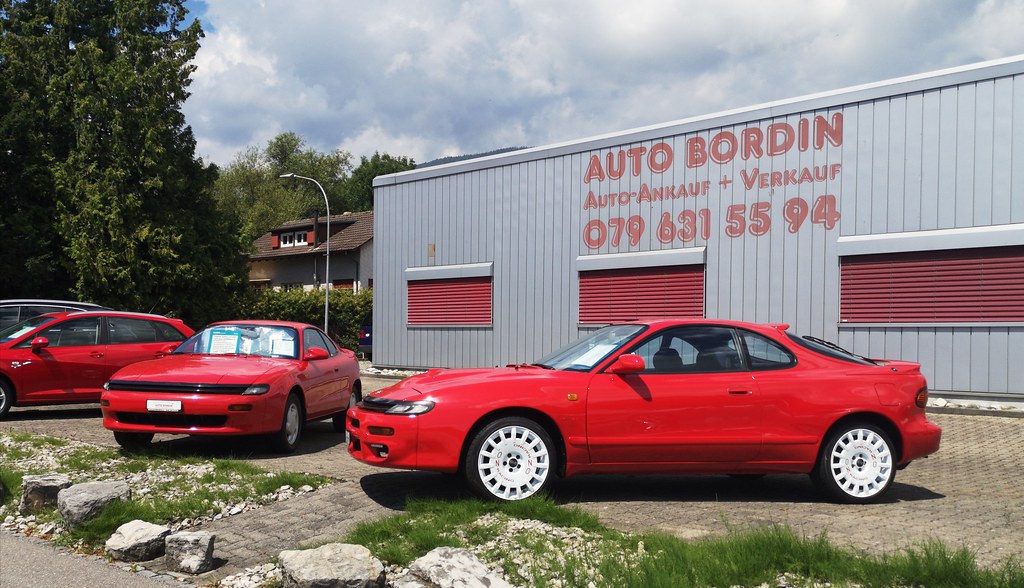
12. **Toyota Celica GT Four**By the late 1980s, Toyota had already built a bulletproof reputation in motocross and rallying circles, proving their chops on the dirt and track. So, when it was time to introduce another high-performance model to absolutely dominate at the World Rally Championship in 1988, they delivered in spades with the first-generation Celica GT Four. This bad boy came loaded with a turbocharged 3S-GTE engine and full-time all-wheel-drive, and it immediately started racking up awards.
Fast forward to 1994, when the ST205 model hit the Japanese market, and the Celica’s trademark power band was nothing short of legendary. This generation came packed with even more performance upgrades, including an all-aluminum hood to keep weight down, advanced four-channel ABS, an improved CT20B twin entry turbocharger for even more boost, and the game-changing “Super Strut Suspension.” Every detail was about pushing boundaries and winning.
Today, the Celica GT Four isn’t just a classic car; it’s widely regarded as a symbol of that familiar Japanese ingenuity and raw power that defined the ’90s JDM scene. It represents an era when manufacturers were fearless in their pursuit of performance, creating vehicles that not only won races but also captured the imaginations of drivers worldwide. It’s a true legend that continues to inspire.
Car Model Information: 2025 Hyundai PALISADE Calligraphy Night Edition
Name: Toyota Celica GT-Four
Caption: Toyota Celica GT-Four All-Trac Turbo (ST185, US)
Manufacturer: Toyota
Aka: ubl
Production: October 1986 – June 1999
ModelYears: 1986 – 1999
Assembly: Tahara, Aichi
Class: ubl
BodyStyle: liftback,coupé
Layout: Front-engine, four-wheel-drive layout
Related: Toyota Celica
Categories: 1980s cars, 1990s cars, All-wheel-drive vehicles, Articles with hAudio microformats, Articles with short description
Summary: The Toyota Celica GT-Four is a high performance model of the Celica Liftback that was produced from 1986 to 1999, with a turbocharged 3S-GTE engine, and full-time AWD. It was created to compete in the World Rally Championship, whose regulations dictate that a manufacturer must build road-going versions of the vehicle in sufficient numbers. These vehicles are referred to as “homologation special vehicles”.
The Celica GT-Four came in three generations; the ST165, based on the fourth generation Celica, and manufactured between October 1986 and August 1989; the “super round” shape ST185 produced from September 1989 to September 1993; and the ST205, built from February 1994 to June 1999.
The Celica GT-Four production cars were built at Toyota’s Tahara plant in Aichi Prefecture, Japan, and the rally cars were prepared by Toyota Team Europe in Cologne, Germany.
The Celica GT-Four ST165 made its World Rally Championship (WRC) debut in the 1988 Tour de Corse, with its first WRC victory coming in the 1989 Rally Australia. The ST185’s WRC debut was in the 1992 Rally Monte Carlo, and its first WRC win was in the 1992 Safari Rally, which was one of its four victories in that year. The ST185 was Toyota’s most successful rally car for more than two decades until this position was taken by Toyota Yaris WRC, and now the GR Yaris Rally1. The Celica ST185 won the WRC Drivers’ Championship in 1992, and the WRC Manufacturers’ and Drivers’ championships in 1993 and 1994. The ST205 came in late 1994, and became the official rally car in 1995 with one WRC victory before disqualification. It also won the 1996 European Rally Championship.
The significance of the Toyota Celica GT-Four in WRC history, previously dominated by European manufacturers, is that it was the first time a Japanese car manufacturer entered the WRC with an AWD turbocharged car, took trophies and won the titles. Since then other Japanese manufacturers have been successful in the WRC. Toyota preceded the Mitsubishi (Lancer Evolution and Galant VR-4) and the Subaru (Legacy and Impreza), but not the Mazda (Mazda 323GT-R & 323GT-X). Toyota later exited the WRC to concentrate their racing efforts in Formula One, but in 2017, 11 years after the Celica was discontinued, Toyota returned to WRC with the Toyota Yaris.
Toyota Team Europe (TTE) was also the first to introduce the anti-lag system (ALS) in their Group A ST205 Celica GT-Four rally cars, a technological breakthrough that was later adopted by other teams.
Get more information about: Toyota Celica GT-Four
Buying a high-performing used car >>>
Brand: Toyota Model: Celica GT Four
Price: $48,755 Mileage: 4,184 mi.
Read more about: Rev Up Your Restoration: The Ultimate Guide to the Best Free Online Forums for Classic Car Enthusiasts
And there you have it, folks! Our turbocharged tour through the ’90s JDM scene comes to a thrilling conclusion, but the legacy of these incredible machines lives on. From the track-conquering legends to the street-dominating drift kings, these Japanese powerhouses weren’t just cars; they were a cultural phenomenon that shaped a generation of enthusiasts. They proved that innovation, reliability, and sheer driving pleasure could come in one jaw-dropping package, cementing their place as the absolute kings of an unforgettable era. Whether you’re chasing high speeds or simply soaking in the nostalgia, these ’90s JDM icons remind us why some cars are just built different—and why they’ll forever hold a special place in our hearts and on the road. Keep those engines revving, and the JDM dream alive!



